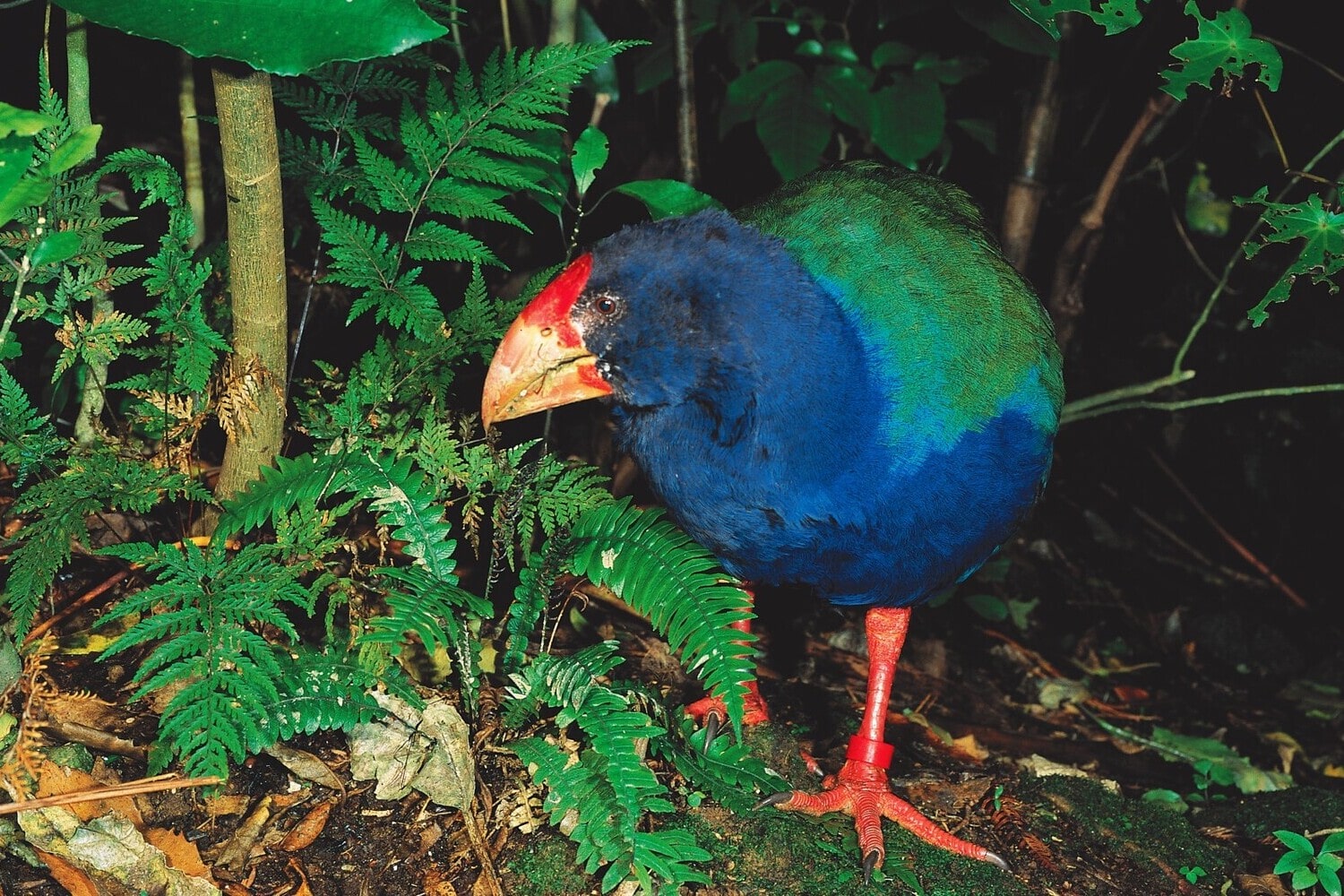The takahe is a rare and little-known bird found exclusively in New Zealand. Its story is filled with mystery, unexpected discoveries, and a remarkable conservation effort. Once believed to be extinct, the takahe was rediscovered in the mid-20th century, making headlines and inspiring a new generation of wildlife protection. Today, the takahe symbolizes the resilience of nature and the power of human intervention to save endangered species. These interesting facts will help you better understand the uniqueness and importance of this remarkable bird.
- The takahe is a flightless bird from the rail family. Its scientific name is Porphyrio hochstetteri, and it is endemic to New Zealand. While closely related to the purple swamphen, the takahe is larger, stronger, and more robust. With no natural predators in its environment, it lost the ability to fly over time.
- In the 19th century, European settlers first encountered the takahe in the South Island’s alpine regions, but the bird soon disappeared from scientific records. For over 50 years, it was considered extinct. In 1948, New Zealand doctor and ornithologist Geoffrey Orbell rediscovered a small population near Lake Te Anau. This sensational find launched a nationwide conservation initiative.
- The takahe has strikingly colorful plumage, with shades of blue and purple on its chest and a greenish back. Its beak is large, red, and powerful, ideal for tearing tough leaves and plant stems. Its legs are strong and pink, built for walking in rugged mountain terrain. The takahe’s vivid appearance makes it one of New Zealand’s most recognizable birds.
- This bird is ground-dwelling and extremely cautious in the wild. It typically lives in pairs or small family groups and defends its territory from intruders. Its diet consists mainly of grasses, shoots, seeds, and leaves. One of its favorite foods is snow tussock, a type of alpine grass.
- Takahe reproduction is slow and requires significant parental investment. The female lays only two eggs per year, and usually only one chick survives. Both parents share incubation and care for the chick over several months. This low reproduction rate makes the species especially vulnerable.
- In the 20th century, introduced predators such as stoats, rats, and cats posed the greatest threat to the takahe. These invasive species caused a sharp decline in the bird’s population. Conservationists relocated some of the takahe to predator-free offshore islands. These efforts helped stabilize and gradually increase their numbers.
- The takahe is considered a national treasure in New Zealand. It is fully protected by law and can only be seen in special wildlife reserves. One of the key conservation sites is Fiordland National Park, which preserves the takahe’s natural alpine habitat. Breeding centers also play a vital role in species recovery and research.
- Each takahe is given a unique name and an identification band on its leg. All individuals are registered in a national database, and their lives are carefully monitored. Scientists collect DNA samples, track health and behavior, and observe movements. This data is essential for effective conservation strategies.
- In Māori culture, the takahe is a symbol of wisdom and tranquility. Traditional legends describe it as a bird that can sense changes in the weather or alert people to danger. Its presence in the landscape is seen as a sign of balance and harmony with nature. Some iwi consider it a guardian spirit of the mountains.
- Today, the takahe population stands at just over 500 individuals. It is one of the world’s rarest birds and remains under constant surveillance. Successful conservation programs offer hope for a more secure future. However, any lapse in protection could again put the species at risk.
- The takahe is officially classified as endangered. Its comeback story has become a global example of successful wildlife restoration. The bird continues to inspire conservationists around the world to preserve biodiversity. The takahe represents hope and the enduring power of nature.
- Interestingly, the takahe is often confused with its smaller relative, the purple swamphen. While they share similar colors, the takahe is bulkier, flightless, and much rarer. The purple swamphen is widespread and not threatened, unlike the takahe. Proper identification is crucial for scientific and conservation efforts.
These fascinating facts about the takahe reveal a bird unlike any other, one that stands as a testament to the uniqueness of New Zealand’s wildlife. The takahe’s journey from presumed extinction to recovery shows how much can be achieved through dedicated conservation work. You may not have known that this bird’s survival hinged on human intervention and collective responsibility. Its story reminds us how important it is to protect and value every species on our planet.





